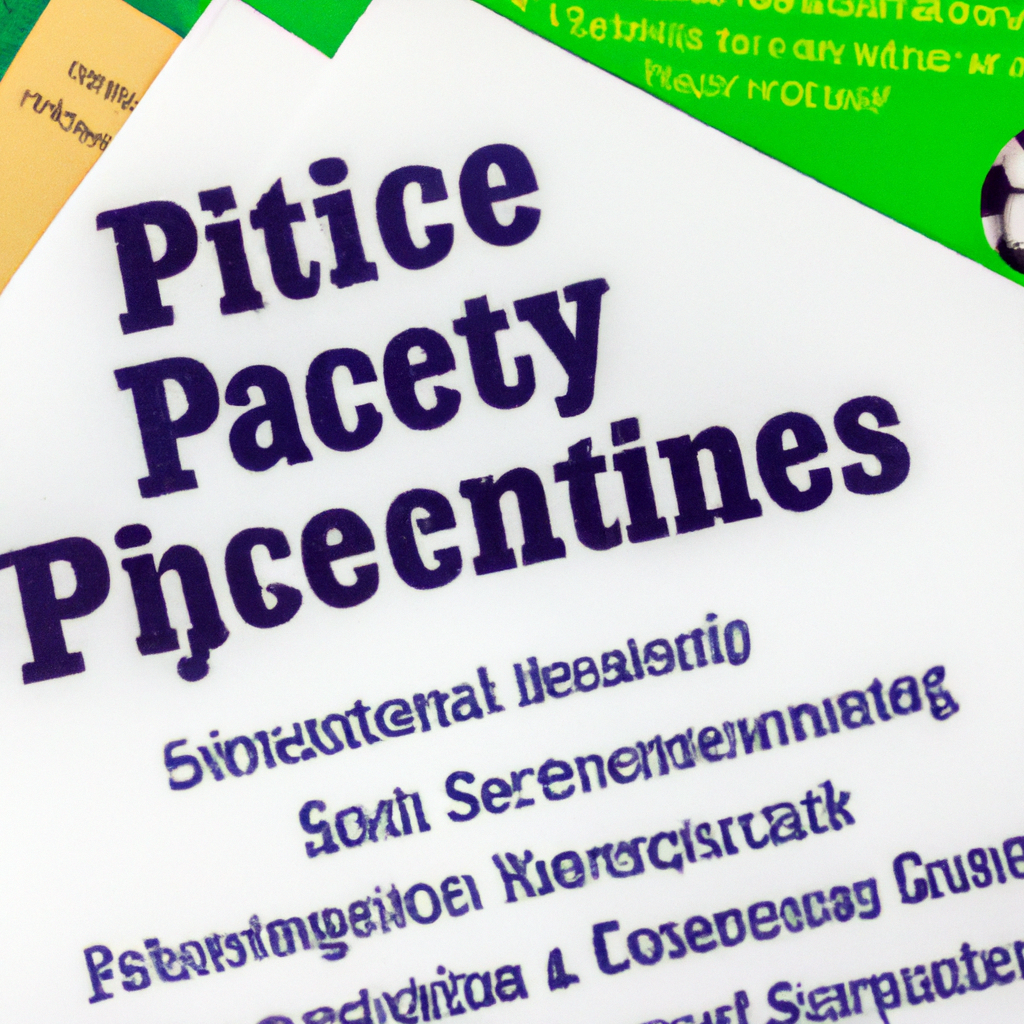It’s no secret that physical activity is crucial for a healthy lifestyle. Yet, despite the overwhelming evidence supporting the benefits of exercise, many North American schools have cut back on physical education and recess time in recent years. As a result, many students spend their days sitting in class without any opportunities to move their bodies. But all hope is not lost. There are schools and organizations across North America that are taking action to promote physical activity and ensuring that students have the opportunity to lead healthy, active lives. From creative initiatives to positive outcomes, the strategies and success stories of these programs offer hope and inspiration for schools everywhere.
1. “Bringing Movement Back: A Push for Physical Activity in North American Schools”
Physical education has always been a key element in promoting healthy living for students in North American schools. However, in recent years, schools have been battling a rising epidemic of physical inactivity among young students.
According to the Centers for Disease Control and Prevention, only about 25% of American children engage in the recommended 60 minutes of physical activity per day. This has led to an alarming increase in health problems such as obesity, heart disease, and diabetes.
The solution to this problem is to bring movement back into the classroom. Schools are beginning to embrace innovative approaches to physical education. They are incorporating new programs and technology, such as dance and fitness video games, to make physical activity more fun and engaging for students.
Furthermore, schools are also focusing on providing more opportunities for students to be physically active throughout the day. This includes adding physical activity breaks during classroom instruction, creating more outdoor play spaces, and encouraging active transportation to and from school.
- Implementing more physical education classes and programs to ensure students get the recommended amount of physical activity each day.
- Providing more opportunities for students to be active throughout the entire day, including during classroom instruction and recess time.
- Encouraging active transportation to and from school, such as walking or biking.
- Incorporating technology and new programs to make physical activity more engaging for students.
By implementing these changes, North American schools can help combat the physical inactivity epidemic among young students and promote healthier, happier lives.
2. “Effective Strategies for Encouraging Exercise in the Classroom”
It’s important to encourage physical activity in the classroom to promote student health and wellbeing. Below are some effective strategies for getting students moving and engaged in exercise:
**1. Incorporate Movement breaks:** Integrate movement breaks into your lesson plan to break up longer periods of time spent sitting. This can include stretching, dance, yoga or fun mini-games.
**2. Make it enjoyable:** Making exercise fun and engaging is key to encouraging participation. Incorporate themes, such as sports or animals, and encourage teamwork. Also, include upbeat, energizing music to enhance the experience!
**3. Use technology:** Everyone loves using technology, so why not combine it with physical activity? Use apps or YouTube channels with exercise videos for kids. Also, try using pedometers or fitness trackers to motivate students to meet their goals.
**4. Create a classroom game:** Create a classroom game where physical activity is required to progress or win. This could include activities like a scavenger hunt, relay race or a dance competition.
**5. Reward physical activity:** Use rewards to motivate students. Positive reinforcement goes a long way! Offer prizes, such as stickers or extra playtime, for meeting exercise goals.
By incorporating these strategies, students will have fun while still getting the physical activity they need to stay healthy and focused in school.
3. “From Brain Breaks to Box-Office Success: Schools Making Strides in Promoting Physical Activity”
One of the biggest challenges that schools face today is promoting physical activity among students. The good news is that many schools are making strides in this area, using a variety of strategies to help kids get up, get moving, and stay healthy.
One popular approach is to incorporate brain breaks into the school day. These short, five-minute breaks give students a chance to stretch, move, and refocus their minds before returning to their work. Teachers can use a variety of brain breaks, from simple stretches to more complex exercises like yoga or dance.
Another effective strategy is to provide students with opportunities for structured physical activity during recess or PE classes. Schools can also offer after-school sports programs or clubs, giving kids a chance to try different sports and activities that they might not have access to otherwise.
Finally, some schools are turning to technology to help promote physical activity. From fitness apps to virtual reality games, there are a variety of tools available to help keep kids engaged and interested in physical activity.
Overall, there are many ways that schools can promote physical activity and help students lead healthier, more active lives. Whether through brain breaks, structured physical activity, or the latest technology, educators can make a real difference in the lives of their students. By encouraging kids to be active and move more, schools can help create healthy habits that will last a lifetime.
4. “Inspiring Change: Success Stories of Schools Prioritizing Physical Education
In an era where technology constantly takes the center stage, it’s essential for schools to prioritize physical education to encourage students to be active and healthy. The following success stories highlight how some schools have made efforts to put physical education first and inspire positive changes in their students:
– **Heritage Elementary School, Missouri** – This school has set a great example by prioritizing physical education, with students enjoying at least 150 minutes of physical activity per week. They have recently introduced a new initiative, “Fitness Fridays,” where students participate in fitness activities during their PE classes. Creativity is also encouraged, as students are given the chance to come up with their own exercises. This initiative has not only served as a proactive physical fitness program but has also been proven to have positive effects on academic performance.
– **St. Charles School District, Illinois** – With the help of a grant, all elementary schools in this district have been able to acquire new equipment and software to assist in physical and health education. The equipment ranges from traditional sports gears to bikes and even heart rate monitors. This hardware and software are used to track each student’s progress and set personal fitness goals. Through this system, students become more engaged and inspired to be physically active.
– **Hinsdale Central High School, Illinois** – This school has formed a new physical education program that focuses on mindful and holistic health. They have introduced different practices, including yoga, tai chi, and meditation, to encourage students to be more aware of their mental and physical well-being. These practices complement traditional physical education activities such as weightlifting and cross-fit. With the integration of a holistic health curriculum, students learn to balance their physical and mental health, helping them cope with the stress of academic life.
Physical education is not an extracurricular activity, but a crucial factor in ensuring students’ overall academic and social success. These schools demonstrate how schools can prioritize physical education in a creative and engaging way that inspires students to be active and healthy. It is clear that prioritizing physical education in schools must be a priority.
In conclusion, promoting physical activity in North American schools is not just a matter of ensuring children have a healthy outlet for their energy, but also of setting them up for a lifetime of good health habits. As we have seen, there are a variety of strategies that schools can employ to encourage active play and exercise, from increasing opportunities for structured physical education classes to incentivizing active transportation to school. And the success stories from schools across the continent demonstrate that with a little creativity and determination, it is possible to make a real difference in children’s lives. Whether it means incorporating more dance into the curriculum or transforming a schoolyard into a natural playground, there is no one-size-fits-all approach to promoting physical activity, but the benefits are clear. By creating a culture of movement and play that supports physical, emotional, and cognitive development, North American schools can help to shape healthier and happier generations to come.



